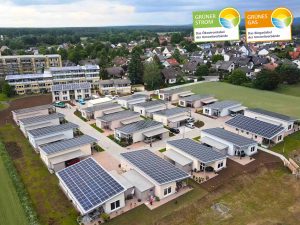Our biogas criteria
Certification to the highest environmental standards
To make sure you get a high-quality biogas tariff, we are constantly developing our criteria
Independent institute
Tariffs with the Grünes Gas-Label are reviewed every two years and validated by an independent institute.
catalog of criteria
The basis for this is a detailed catalog of criteria that can be viewed by the public and is regularly reviewed and adjusted as necessary.
Associations
The criteria are constantly being developed by environmental, peace and consumer associations and independent energy experts.
From what is the gas obtained?
Biogenic residual and waste materials
This includes organic waste such as green waste, fallen fruit and organic kitchen waste. Sewage gas and sewage sludge may also be used for gas production in addition to liquid manure and dung.
Renewable raw materials (NawaRo)
Only if there is an ecologically sustainable and energy transition-supporting overall concept for the use of energy crops such as maize or through-grown silphia (plant species).
Synthetically produced green gases
These include gases that have been produced in an ecologically and energy-economically sustainable manner (e.g. green hydrogen).

How is the energy transition being promoted?
Investment commitment
A fixed amount per kilowatt hour flows into the expansion of renewable energies and innovative energy transition projects - guaranteed.
Energy transition projects
With a biogas tariff with the Grünes Gas-Label, you support many different projects such as new eco-power plants, future technologies like storage and smart grids, energy efficiency measures, e-mobility, citizen energy projects, etc.
Testing
The criteria of the Grünes Gas-Label are checked by us and an independent institute. This ensures that all criteria are objectively assessed and fulfilled.
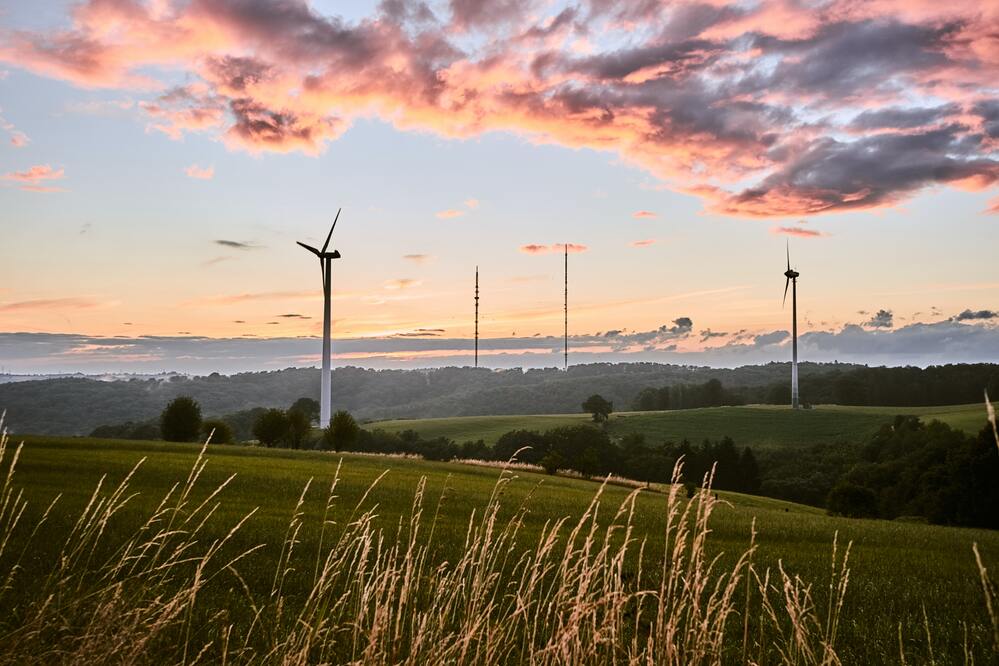
What is important in the provider?
Mission Statement
The Grünes Gas-Label is only granted if the company stands for and works towards the energy transition and the use of renewable energies.
Nuclear and coal power? No thanks!
There must be no participations in nuclear power plants! After 31.12.2026, direct shareholdings in coal-fired power plants are no longer permissible for energy providers that offer an eco-energy tariff with the Grünes Gas-Label.
Transparency
In order for you to be sure of the gas you are purchasing, the energy provider must provide detailed information about the Green Gas certified tariff.
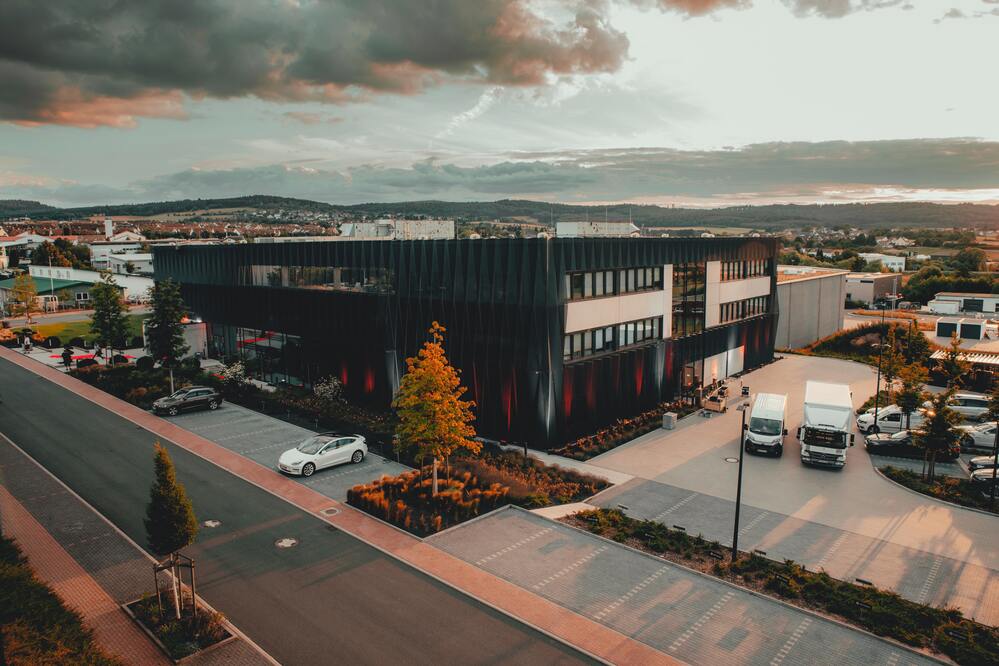
Information material
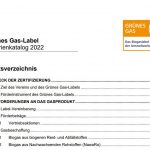



The catalog of criteria
All relevant criteria are recorded in this catalog.
Procedure: Every two years, the certified green electricity products are reviewed using the Green Electricity Criteria Catalog and the results are summarized in expert reports. The reports are prepared by an external auditor, independent institute reviewed.
Exclusion criteria
Exclusion criteria are those that do not allow certification if not met.
- Participation of the company in Nuclear power plants
- Participation of the company in Coal-fired power plants as of the reporting date 1.1.2027
- Lack of investment in energy transition projects
Become a label holder
The obligations associated with certification are regulated in detail. Learn more about the certification process.
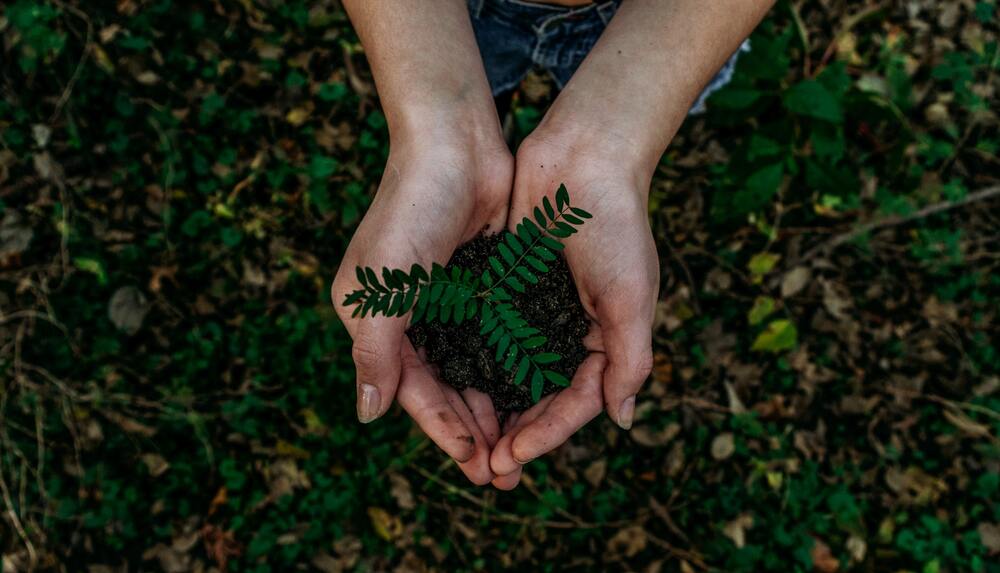
Together for the energy turnaround
Your contact person

Michelle Markwart
Management Consultant, Online Communication
This is what we have achieved together
By choosing a certified green electricity or biogas tariff, you are directly supporting the energy transition. For every kilowatt hour consumed, a fixed amount goes toward the expansion of renewable energies - that's sustainable thinking.
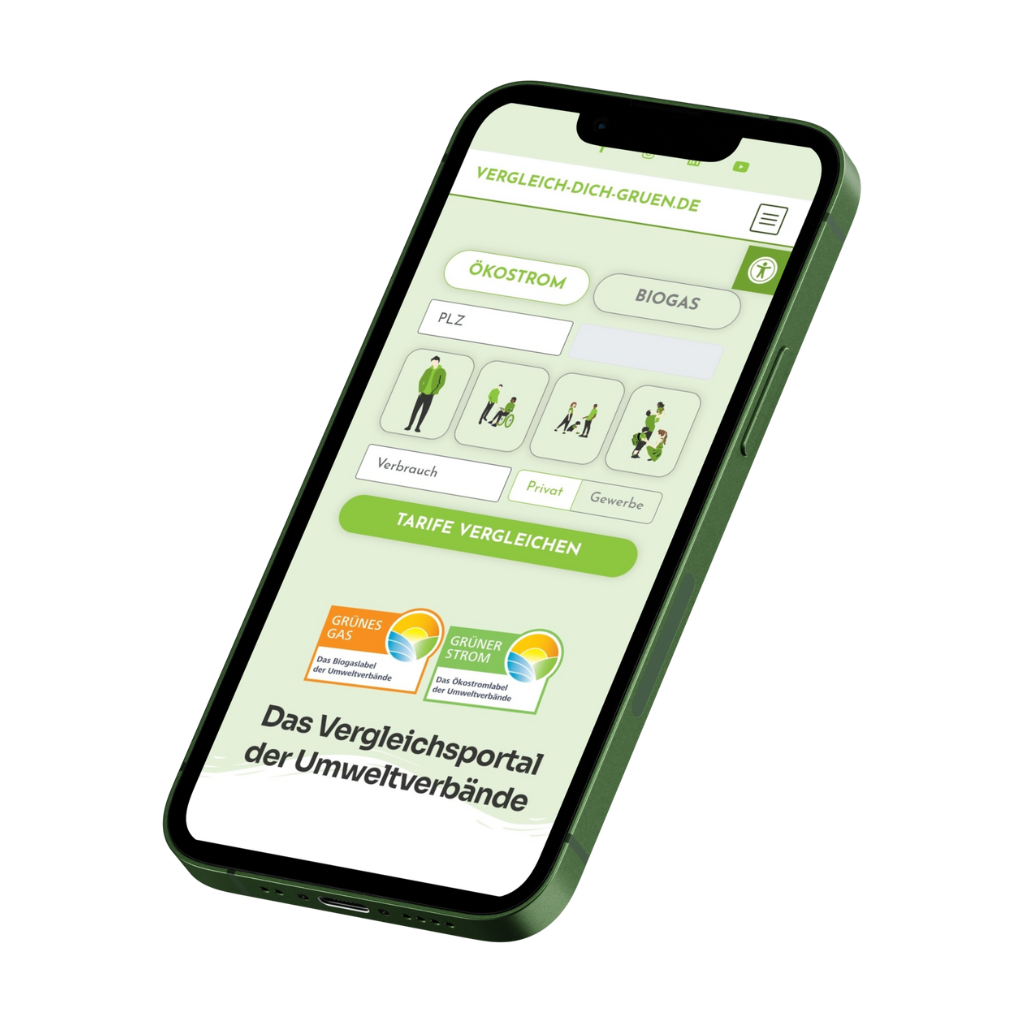
Switch to a certified electricity or biogas tariff now
There are already several online comparison portals for electricity and gas rates. So what's the point of another one?
At the comparison portal of the environmental associations, consumers can compare high-quality and exclusively certified green electricity and biogas tariffs.
"vergleich-dich-gruen.de" offers you the opportunity to actively participate in an energy transition that is nature-friendly, decentralized, citizen-oriented, public welfare-oriented, fair and pollutant-free through your purchase decision.
What you should know about biogas
Grünes Gas-Label
Frequently asked questions
With Green Gas-certified tariffs, guaranteed investments flow into the expansion of renewable energies.
The level of investment is determined by a fixed amount per kilowatt hour consumed. Thus, your gas purchase indirectly influences the investments in the energy transition. The areas of support include the mobility transition, energy infrastructure, energy efficiency, and other projects that serve the energy transition, such as nature conservation, development cooperation, and education.
You can find the whole range in the criteria catalog for the Grünes Gas-Label.
Biogas in general
- Biogenic residues (e.g. biowaste from the organic waste garbage can, plant residues, residues from agriculture such as harvest and slaughter waste, liquid manure, slurry and dung).
- Sewage sludge and sewage gases from wastewater treatment plants, industrial processes, or commercial production (e.g., from biogenic residues in paper recycling).
- Renewable raw materials or energy crops (e.g., corn or through-grown silphia).
The abbreviation NawaRo stands for the term renewable raw materials.
This refers to plants or plant components that originate from agricultural production and are not used as food or feed, but are used materially or energetically, e.g. for the production of biogas.
Sewage gas is a methane-containing gas produced during wastewater treatment by the digestion of sewage sludge. Sewage gas contains between 45 and 70 percent methane by volume.
As the name suggests, this is gas that is produced artificially. Gas is produced from water in an electricity-intensive process called electrolysis. This concept is called power-to-gas. In this context, people often talk about green hydrogen. Green' here means that hydrogen is produced with the help of green electricity.
- Biogenic residues (e.g. biowaste from the organic waste garbage can, plant residues, residues from agriculture such as harvest and slaughter waste, liquid manure, slurry and dung).
- Sewage sludge and sewage gases from municipal wastewater treatment plants, industrial processes, or commercial production (e.g., from biogenic residues in paper recycling).
- Renewable raw materials (e.g. maize or through-grown silphia), but only if there is an ecologically sustainable operator concept that is conducive to the energy transition.
Want to learn more?
Then feel free to contact us and follow us on social media.

